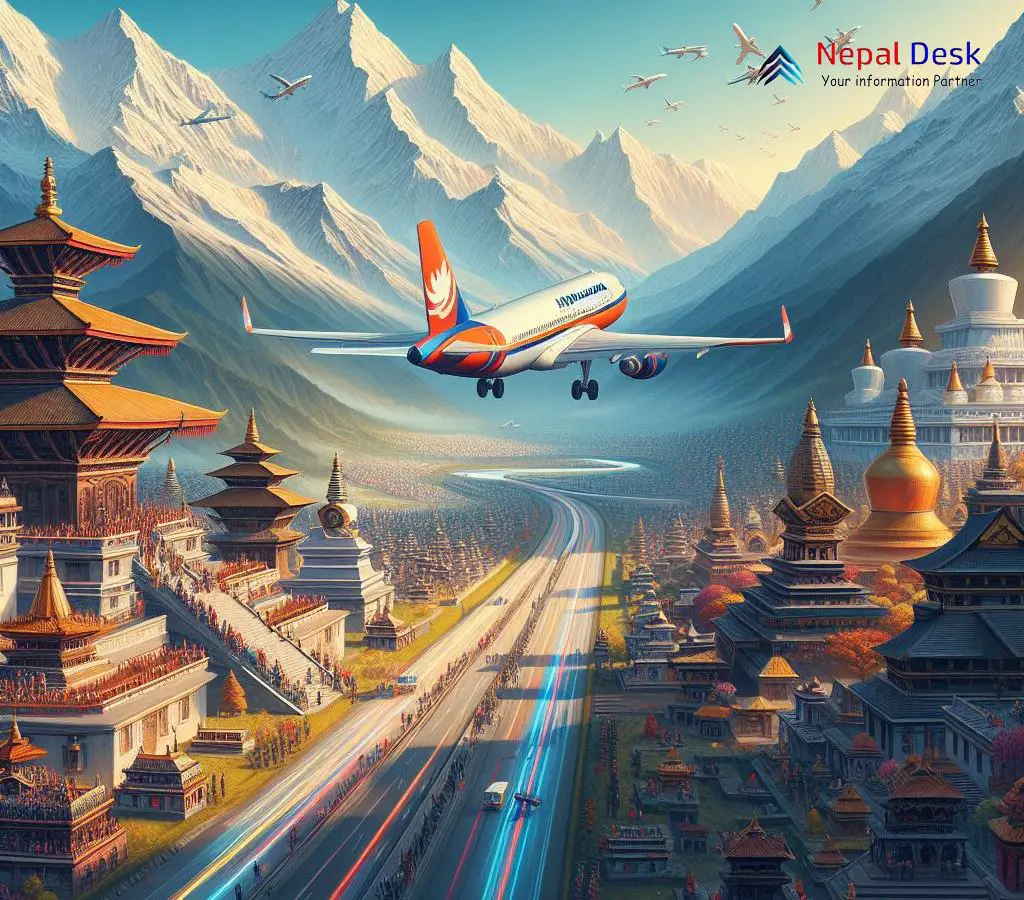Himalaya Airlines Inaugurates Kathmandu-Lhasa Flight
Published Date

Published Date
Himalaya Airlines launches its fifth route in China, connecting Kathmandu to Lhasa, reinforcing cultural and tourism ties between Nepal and China.
⏱ 4 min read
Himalaya Airlines has commenced operations on the Kathmandu-Lhasa-Kathmandu route, with the inaugural flight taking off on Thursday.
Departing from Tribhuvan International Airport (TIA) at 8:40 AM, the airline's flight carried 136 passengers to Lhasa. In celebration of the new route, Minister for Culture, Tourism and Civil Aviation Sudan Kiranti also visited TIA.
The aircraft touched down at Lhasa Gonggar Airport at 12:00 AM local time in the noon, taking a total journey time of 1 hour and 20 minutes. Starting January 1, Himalaya Airlines plans to operate Kathmandu-Lhasa-Kathmandu flights every Monday.
This new addition marks Himalaya Airlines' fifth destination in China, with regular services already operating in Beijing, Chongqing, Qingdao, and Shanghai.
Aiming to strengthen connectivity and foster bilateral relations between the two nations, the company's Vice President Bijay Shrestha stated that their primary objective is to serve 10 distinct tourist destinations within China and attract one million tourists to Nepal from there on an annual basis.
Just days ago, Nepal's Tourism Board announced that the number in Nepal in 2023 (January to December) touched the one million mark and the target is to make it two million next year. In this objective, this extension of air service will play a key role.
Potential for Increasing Tourism
The new direct air link between Kathmandu and Lhasa has great potential to boost tourism in both directions. China is the second largest source market for Nepal's tourism industry. However, the vast majority of Chinese visitors access Nepal overland via Tibet rather than flying directly. The ease of a 1.5-hour Himalaya Airlines flight can exponentially grow Chinese tourists choosing Nepal for quick getaways focused on natural scenery, adventure sports, spiritual retreats, and cultural experiences.
Similarly, the airline opens up Central Tibet's historic attractions to more Nepali travelers and pilgrims through affordable air connectivity. Sites like the Potala Palace, Norbulingka Palace, Sera Monastery, as well as Mount Kailash and Lake Mansarovar, hold great significance, and the Lhasa route can promote two-way tourism exchange.
Enhancing Nepal-China Trade
In addition to travelers, the airline also stands to transport more cargo consignments directly between Kathmandu and Lhasa at lower costs. Chinese industrial products entering Nepal overland currently traverse thousands of kilometers. Importers can benefit from easier air connectivity. Nepal too can now export more fresh items like vegetables, herbs, tea, and handicrafts by air to tap into the massive Tibetan and wider Chinese consumer market through Lhasa.
With the success of Himalaya Airlines' China services, more Nepal-based carriers can also follow suit in launching direct flights to underserved destinations like Lhasa, Chengdu, and Xi'an - expanding transportation options for traders engaged with the northern neighbor.
Boosting Regional Connectivity
The launch of direct flights between Kathmandu and Lhasa carries wider significance for enhancing intra-regional connectivity between South Asian and Chinese cities. Currently, major hubs like Delhi and Shanghai dominate air links between the two neighbors. Direct tier-2 city pairs like Kathmandu-Lhasa open up new routes that can promote better integration along the Himalayan belt.
As China continues major infrastructure development across Tibet with airports, railways, and highways, an exponential rise in travel demand between Nepal and Tibet specifically is anticipated in the coming decade. Himalaya Airlines' positioning itself early within this strategic regional air corridor hence promises a first-mover advantage in the future.
Potential Transit Point for Buddhist Circuits
With this new route, Nepal can market itself as an attractive transit destination for Chinese and Southeast Asian tourists to combine visits to Lhasa as well as Buddha sites across Nepal and India. Packaged itineraries covering Tibet, Nepal, and North India carry immense scope for boosting religious tourism across the trans-Himalayan Buddhist circuit.
As Kathmandu looks to become a major international transit hub between South and East Asia with its new airport and expanded air services, the Lhasa route sets the stage for Nepali carriers to facilitate tri-country trips for pilgrims and visitors immersed in spiritual heritage.
Socio-cultural Exchange
Finally, easier connectivity between Nepali and Tibetan cities can nurture greater people-to-people bonds across communities sharing the Himalayas. Enhanced mobility and exposure can lead to educational exchange programs, cross-border business partnerships, art exhibitions, and more cultural collaboration. Such continued interaction can dispel stereotypes and cultivate meaningful relationships.
As Nepal and China enter a phase of deeper engagement, the Lhasa-Kathmandu air route bodes well for strengthening social capital and affirming age-old cultural ties cutting across political boundaries.
